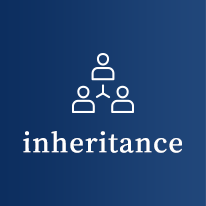Case of filing a lawsuit demanding payment of construction contract
Outline of the case
Company A, a nationwide construction company, and Company Y, a local construction company, formed a JV and received an order for construction work through a public works bidding conducted by the prefecture. Company S, a client of our firm, undertook the construction work as a subcontractor from the JV, completed the work in accordance with the purchase order, and handed over the work to the client. When our client of invoiced for the contract price of 15 million yen, Company A decided to file for application of the Civil Rehabilitation Law before the money was received. The person in charge of Company S came to our firm for consultation and inquired whether it would be difficult to recover the money since the construction work payment had become a rehabilitation claim. After confirming the contract documents and other documents, we suspected that the counterparty to the contract of Company S was a JV between Company A and Company Y, rather than Company A, which had undergone civil rehabilitation. We also investigated past judicial precedents regarding the liability of JV members, and found that although there are cases where joint and several liability is assumed or not assumed, in cases such as this where the parties are jointly engaged in the business of completing the construction of the same section, the prevailing judicial precedent is that they are jointly and severally liable. Therefore, upon formal request from Company S, we decided to file a lawsuit demanding payment for the contracted construction work.
Resolution in Trial Court
In the first instabce of proceedings, the judge understood our arguments and recommended that the defendant, Company Y, settle the case, but Company Y refused to settle until the very end, and no settlement was reached. Therefore, the trial court ruled in favor of the plaintiff, granting the plaintiff’s motion in its entirety. As for the judgment in favor of Company S, it was accompanied by a declaration of provisional execution, so Company S seized Company Y’s bank deposits immediately after receiving the judgment in favor of Company S. Thereafter, an appeal was filed by Company Y. The judge of the High Court also stated his opinion that the judgment of the District Court was appropriate, concluded the argument on the first date, and designated a date for the delivery of the judgment. However, the High Court judge told us that a settlement date would be set before the delivery of the judgment, and that he would like us to consider the possibility of a settlement at that time. Thereafter, after discussions between representatives of both parties at a settlement date set by the High Court, Company Y made a proposal to settle the claim by immediately paying 80% of the claim amount in cash. Company S also wanted to settle the dispute as soon as possible, so we agreed to accept the settlement.
Our Services
We provide debt collection services in a variety of ways at the request of our corporate clients. While most of our collection work is done through negotiation with the debtor, in some cases we are forced to file a lawsuit with the court to determine the existence or nonexistence of the debt in cases with difficult legal relationships. Even in cases where recovery is generally considered to be difficult, we have a proven track record of making various studies to obtain as much recovery as possible, and actually recovering as much as possible. Such cases include: a case in which a debtor filed a petition under the Civil Rehabilitation Law and received a certain amount of payment through a settlement with the debtor (civil rehabilitation company), a case in which a debtor was ordered to commence bankruptcy and recovered a debt from a joint guarantor, a case in which a building was detained by a commercial lien and a lien was placed on movable property through a sale and purchase lien, etc. In a case in which a debtor conducted a corporate spin-off and transferred most of its business to another company for the purpose of concealing its assets, we filed a suit to cancel the fraudulent act and recovered the full amount of the client’s claim during the trial. In order to secure our client’s rights, we will make utmost efforts to obtain a favorable judgment by analyzing evidence, investigating legal relationships, interviewing relevant parties, and preparing evidentiary materials.
Fees
The fees for lawsuits are calculated based on the retainer fee and fee system. The standard amounts are determined in reference to the former Japan Federation of Bar Associations’ Standards for Remuneration, etc.
(1) In cases where the economic benefit is between 3 million yen and 30 million yen or less
5% + 90,000 yen for the retainer fee, 10% + 180,000 yen for the contingency fee
(2) In cases where the economic benefit is between 30 million yen and 300 million yen or less
3% + 690,000 yen for the retainer fee, 6% + 1,380,000 yen for the contingency fee
Example 1) If a claim of 30 million yen is made by filing a lawsuit and a claim of 10 million yen is approved by the court (excluding tax)
・Retainer fee 30 million yen x 3% + 690,000 yen = 1,590,000 yen
・Contingency fee 10 million yen x 5% + 90,000 yen = 590,000 yen
Example 2) If a claim of 10 million yen is made and a claim of 10 million yen is approved
・Retainer fee 10 million yen x 5% + 90,000 yen = 590,000 yen
・Contingency fee 10 million yen x 10% + 180,000 yen = 1,180,000 yen
If an appeal is filed against the judgment of the district court or compulsory execution is conducted, separate fees will be required from the above, so please consult with us.










